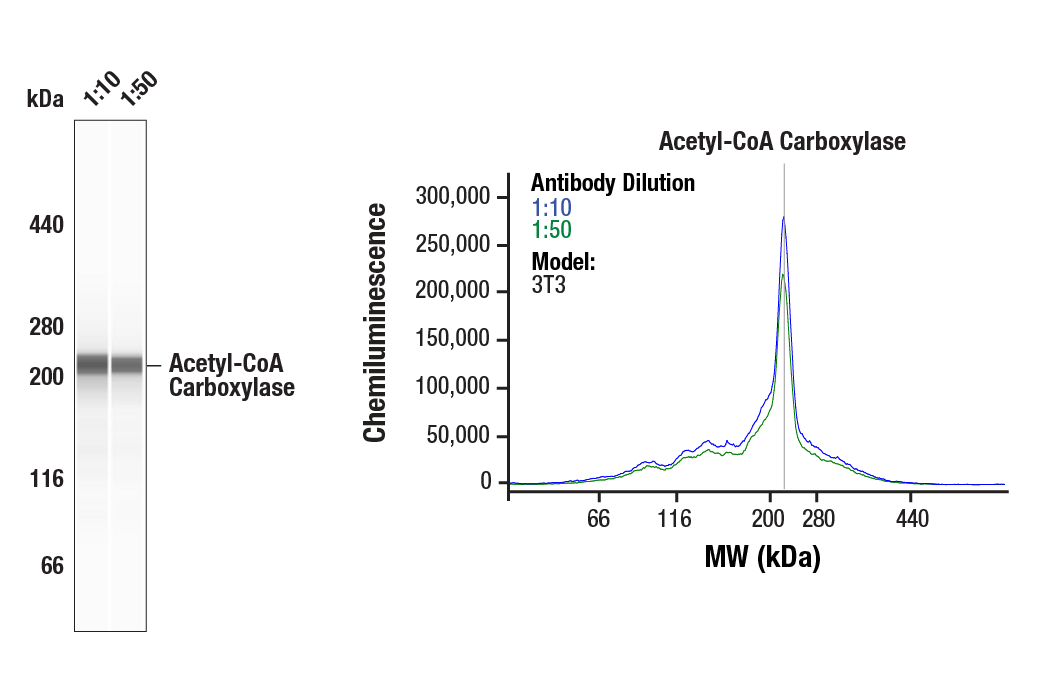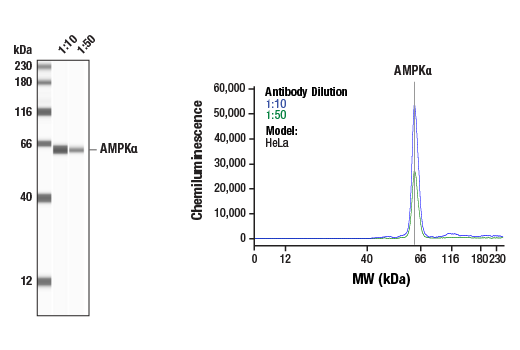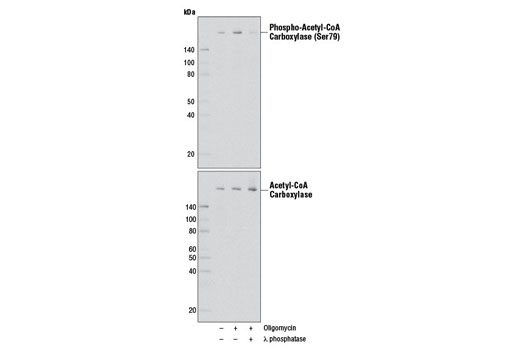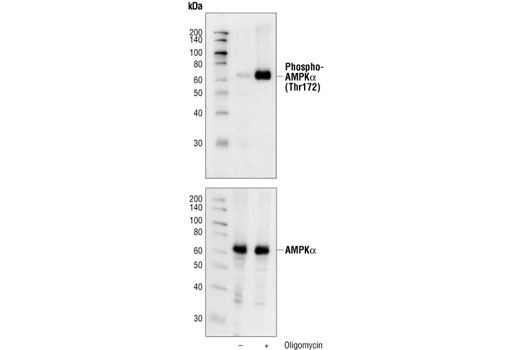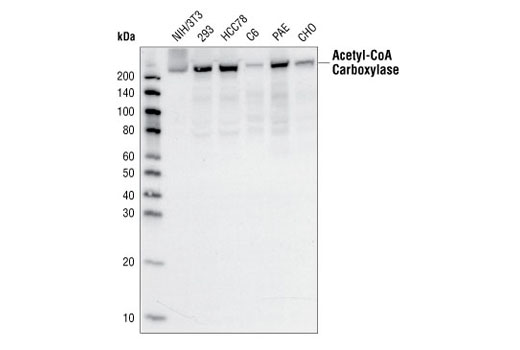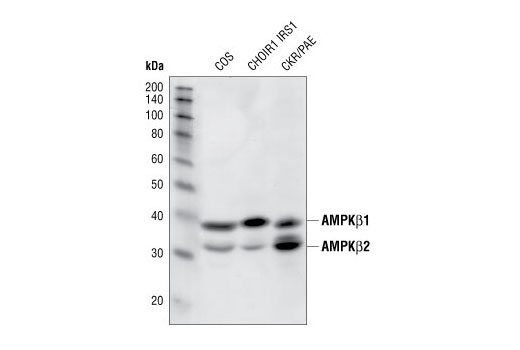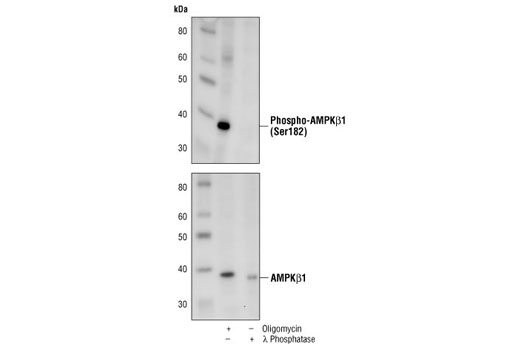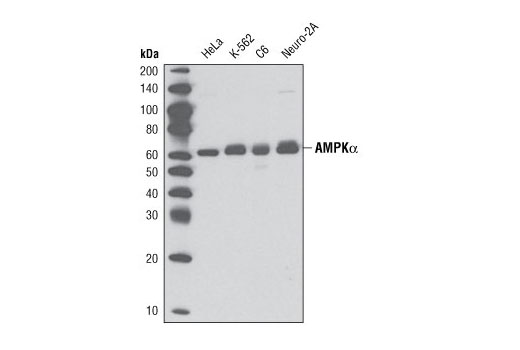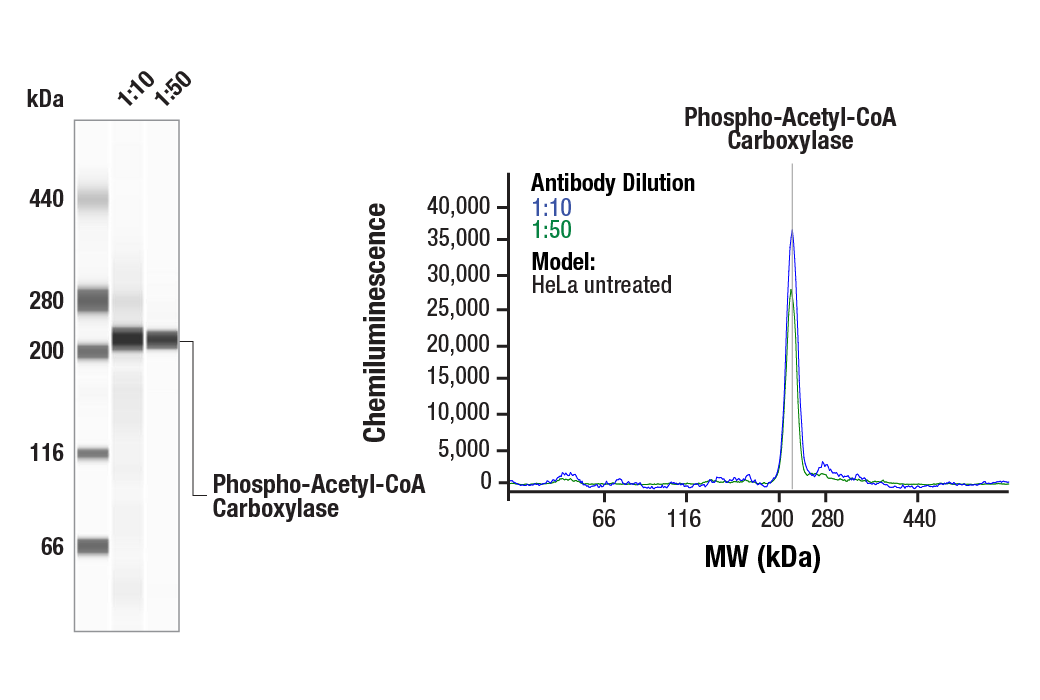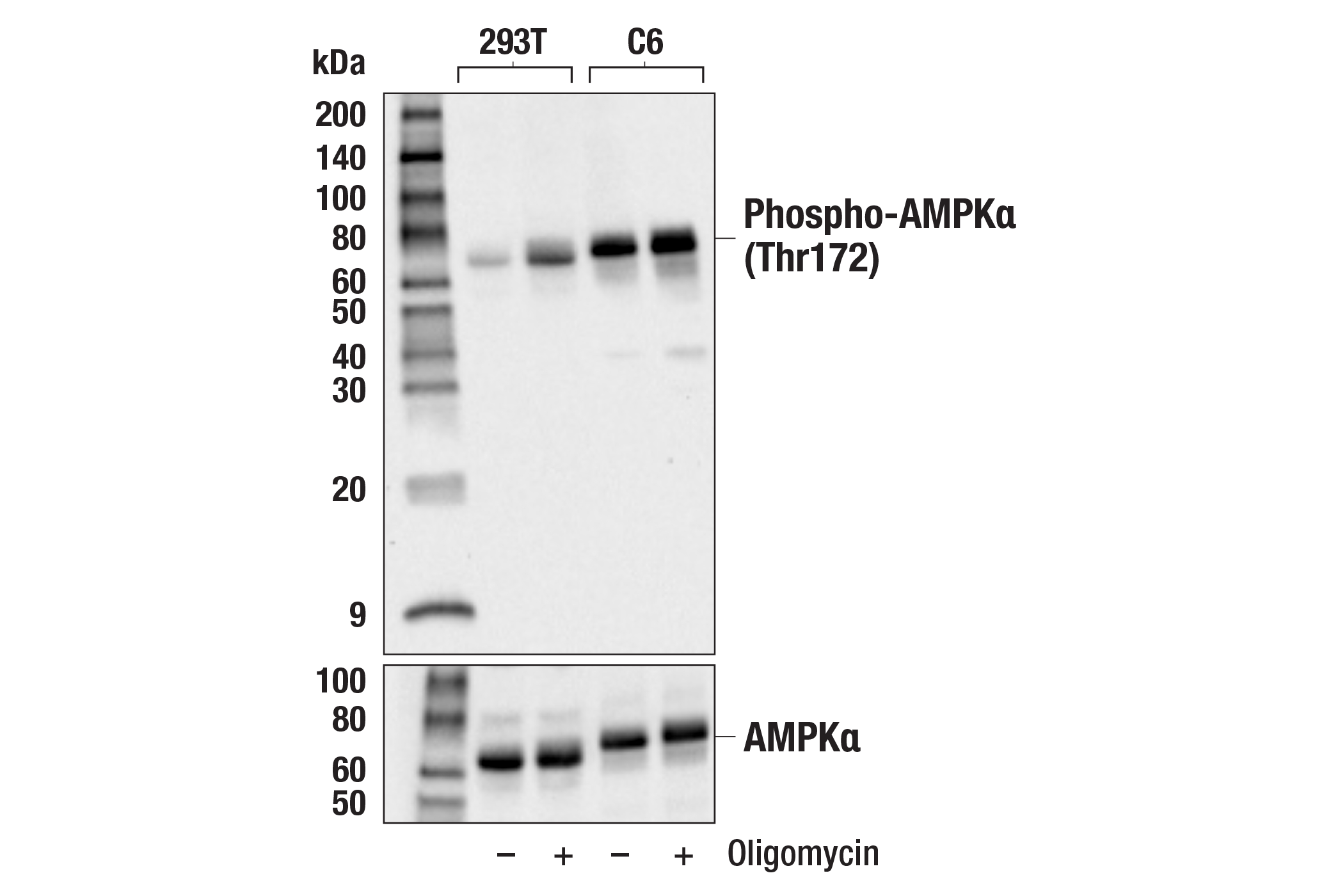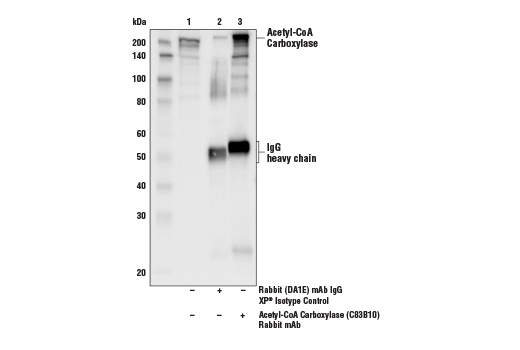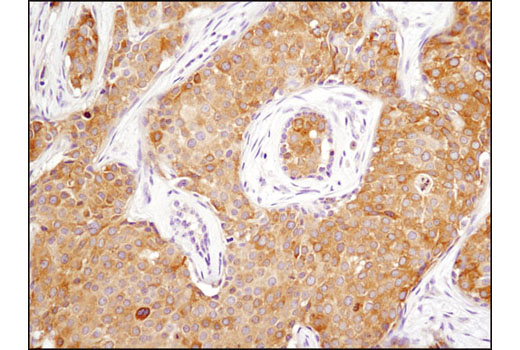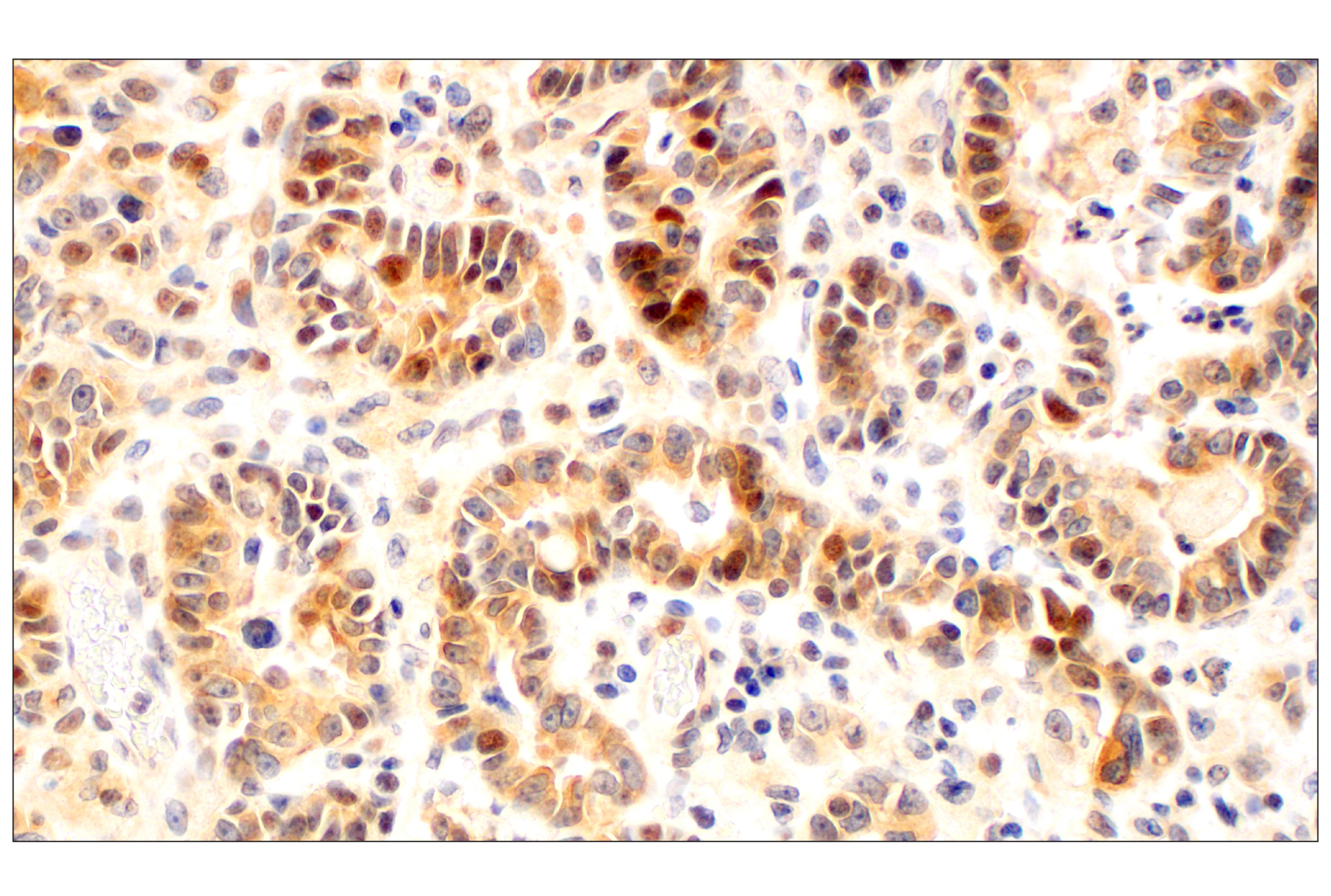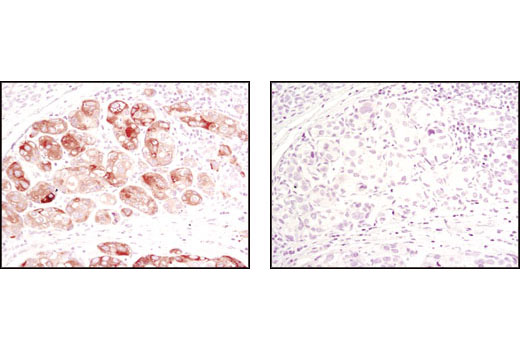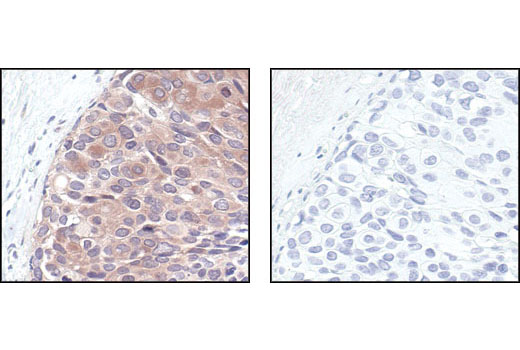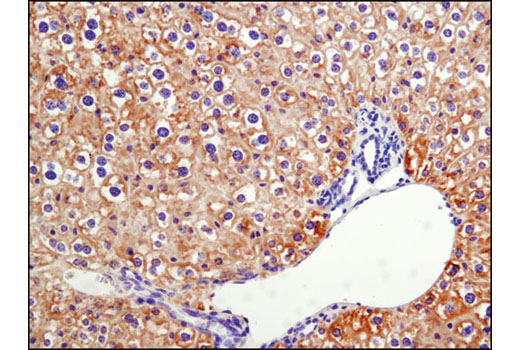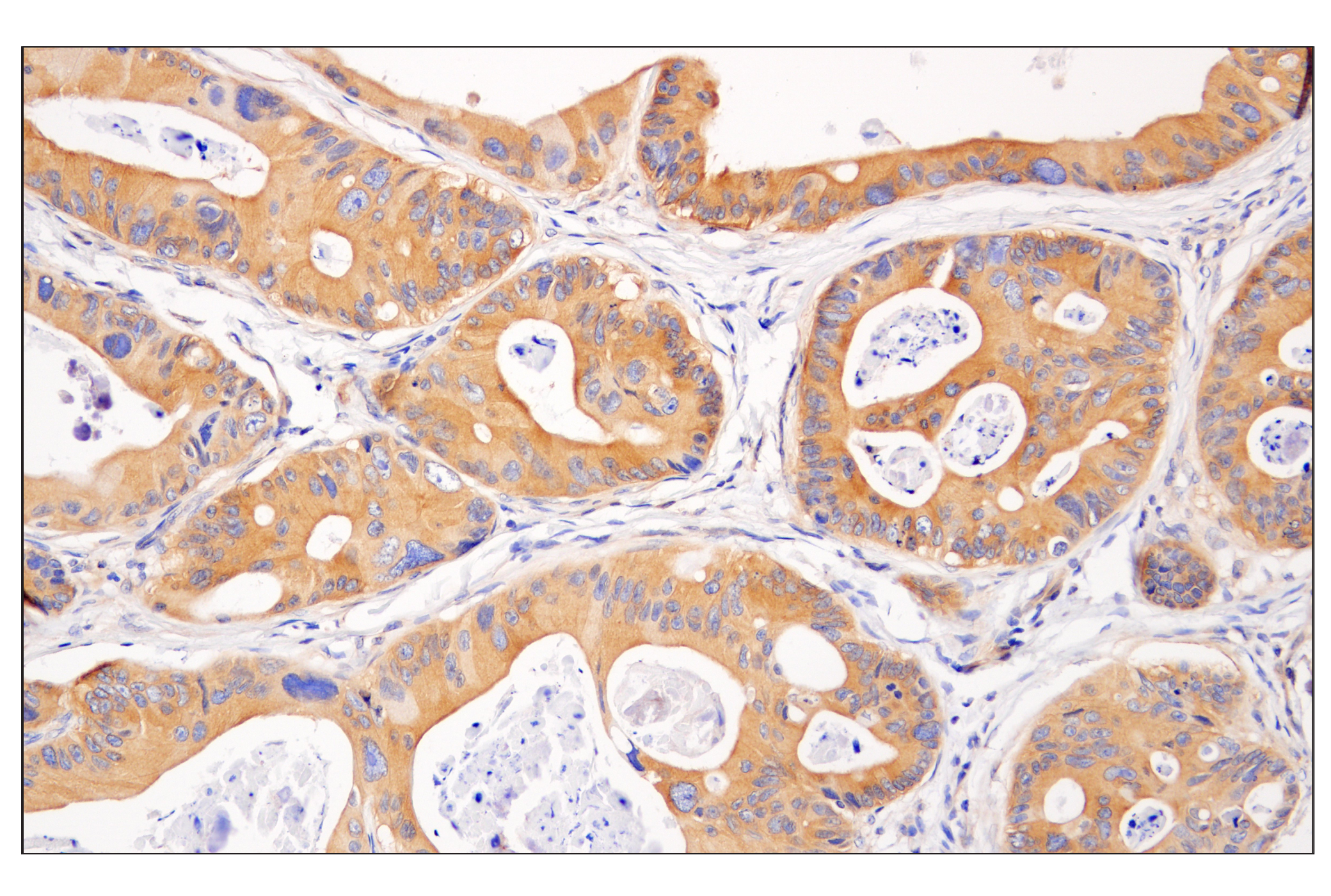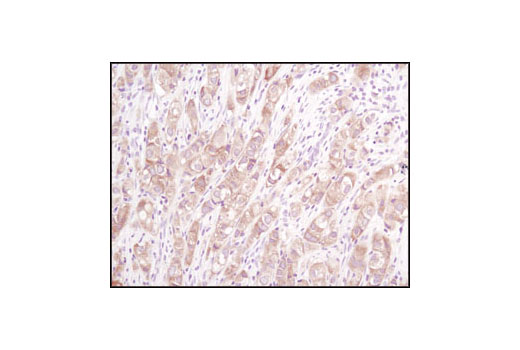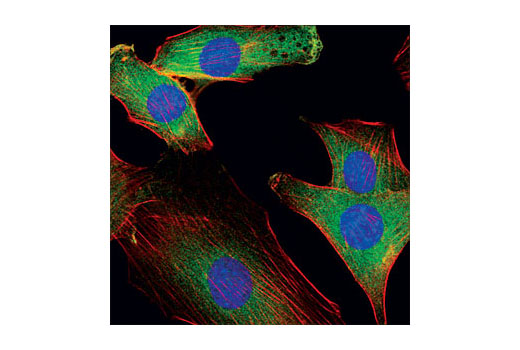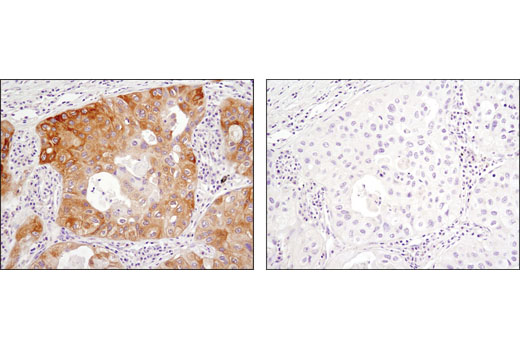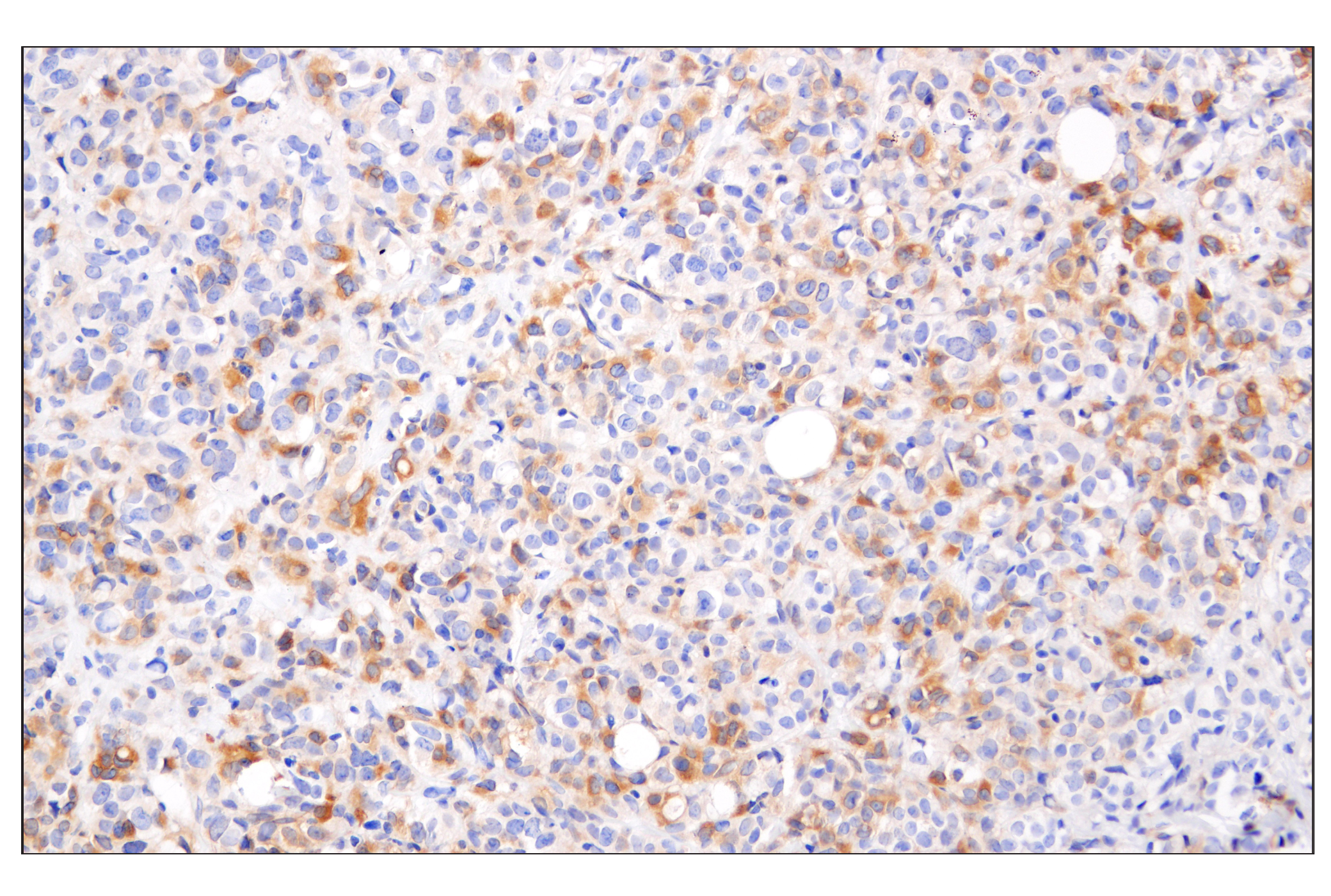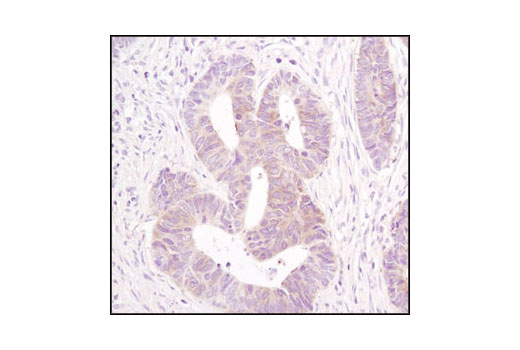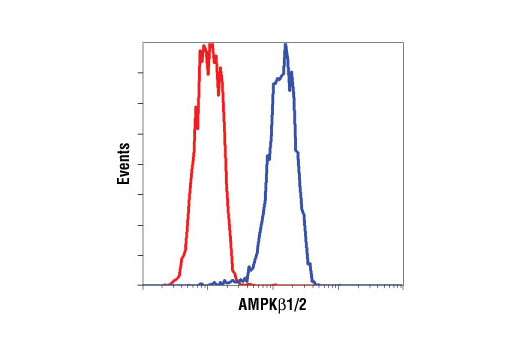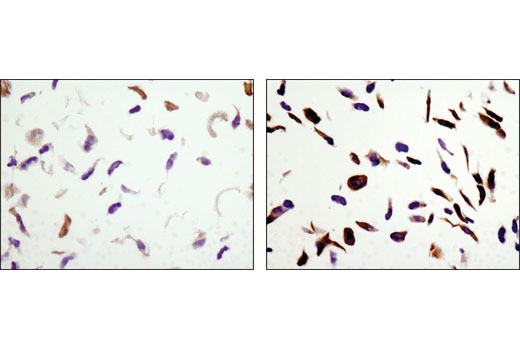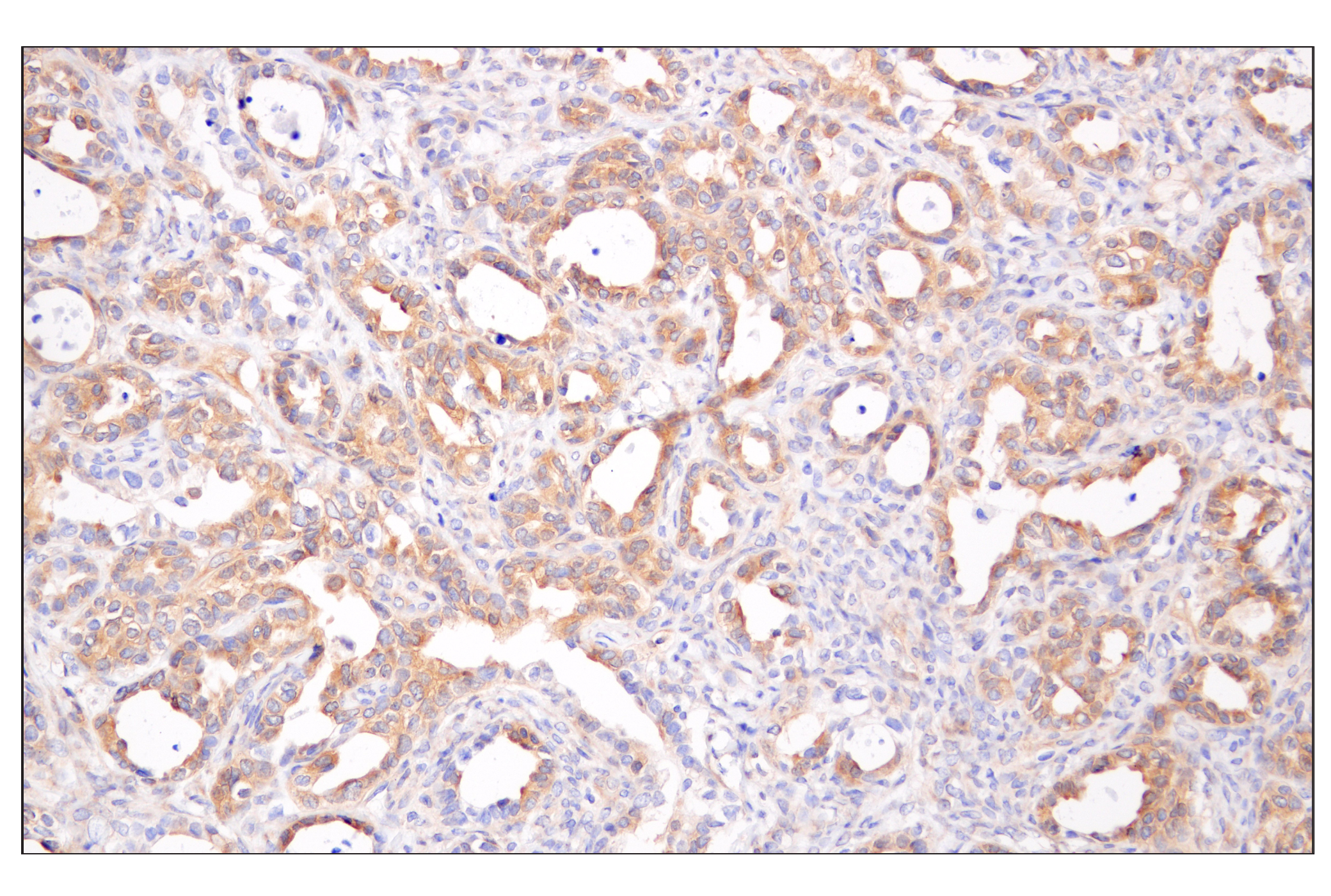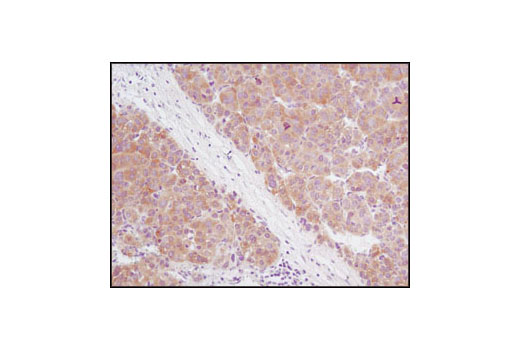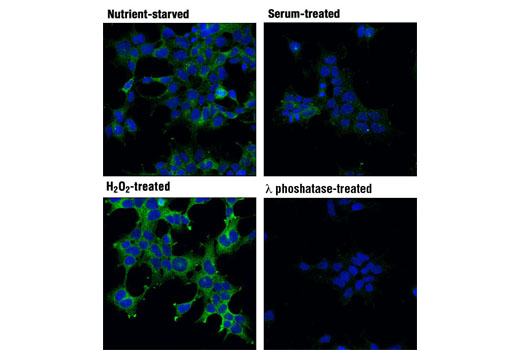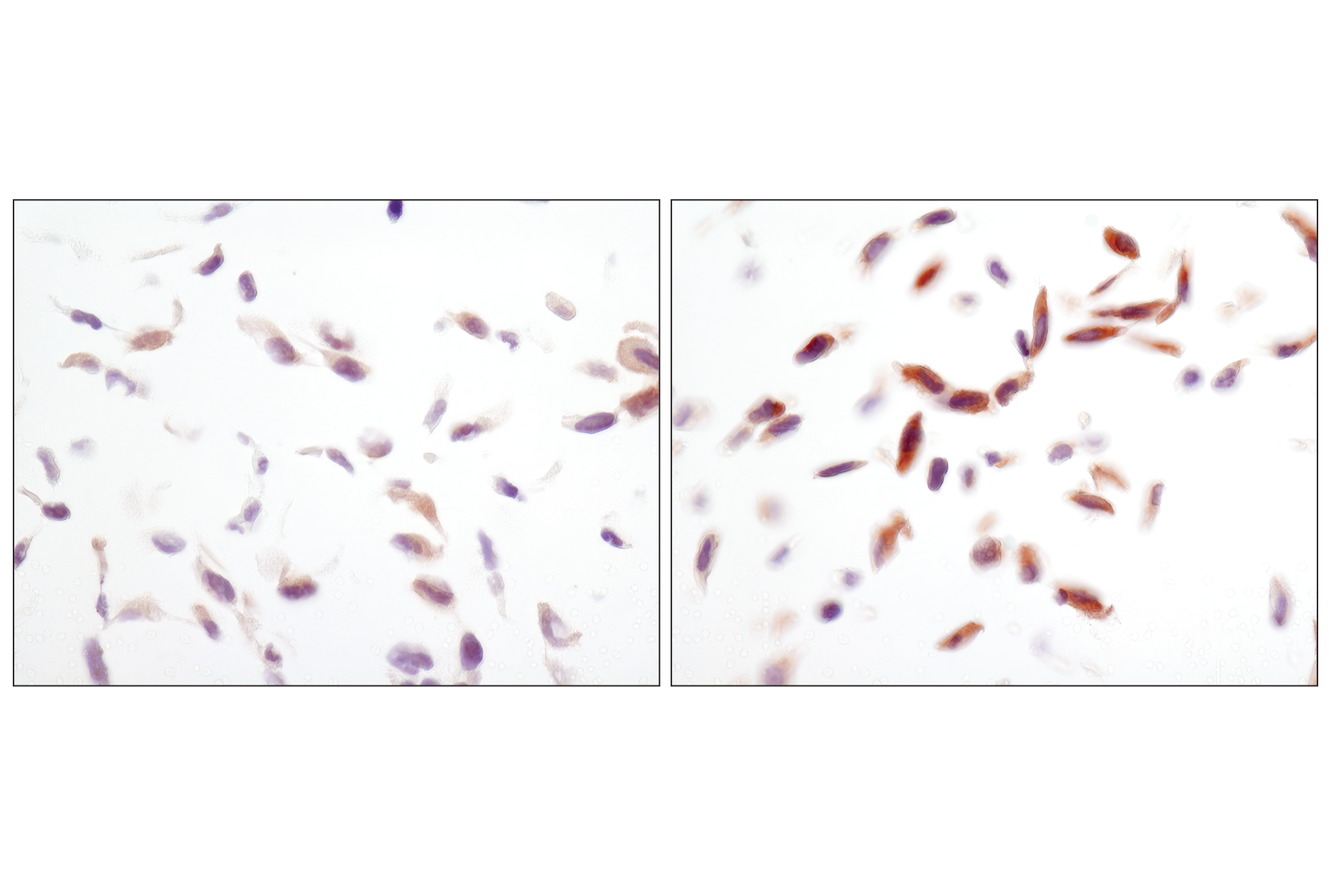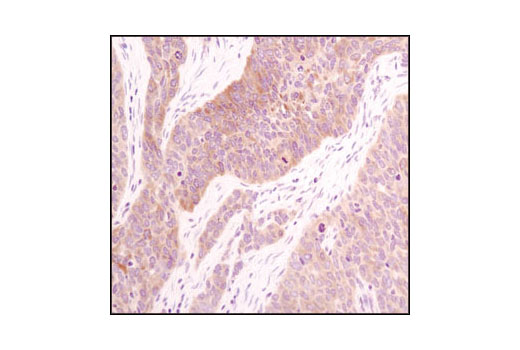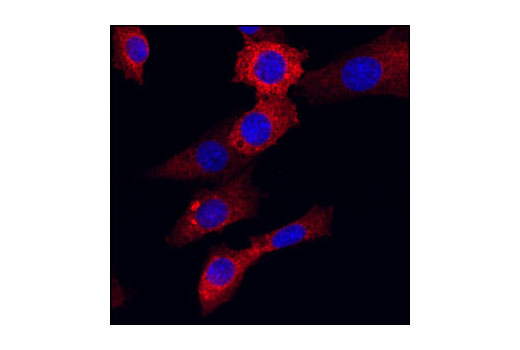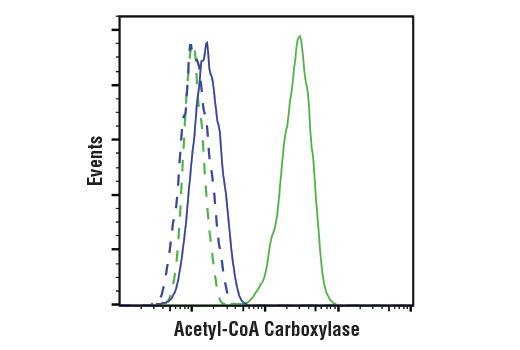| Product Includes | Product # | Quantity | Mol. Wt | Isotype/Source |
|---|---|---|---|---|
| Phospho-AMPKα (Thr172) (40H9) Rabbit mAb | 2535 | 20 µl | 62 kDa | Rabbit IgG |
| AMPKα (D5A2) Rabbit mAb | 5831 | 20 µl | 62 kDa | Rabbit IgG |
| Phospho-AMPKβ1 (Ser182) Antibody | 4186 | 20 µl | 38 kDa | Rabbit |
| AMPKβ1/2 (57C12) Rabbit mAb | 4150 | 20 µl | 30, 38 kDa | Rabbit IgG |
| Phospho-Acetyl-CoA Carboxylase (Ser79) (D7D11) Rabbit mAb | 11818 | 20 µl | 280 kDa | Rabbit IgG |
| Acetyl-CoA Carboxylase (C83B10) Rabbit mAb | 3676 | 20 µl | 280 kDa | Rabbit IgG |
| Anti-rabbit IgG, HRP-linked Antibody | 7074 | 100 µl | Goat |
Please visit cellsignal.com for individual component applications, species cross-reactivity, dilutions, protocols, and additional product information.
Description
The AMPK and ACC Antibody Sampler Kit provides an economical means to investigate energy homeostasis and fatty acid synthesis within the cell. The kit contains primary and secondary antibodies to perform two Western blots with each antibody.
Storage
Background
AMP-activated protein kinase (AMPK) is highly conserved from yeast to plants and animals and plays a key role in the regulation of energy homeostasis (1). AMPK is a heterotrimeric complex composed of a catalytic α subunit and regulatory β and γ subunits, each of which is encoded by two or three distinct genes (α1, 2; β1, 2; γ1, 2, 3)(2). The kinase is activated by an elevated AMP/ATP ratio due to cellular and environmental stress, such as heat shock, hypoxia and ischemia (1). The tumor suppressor LKB1, in association with accessory proteins STRAD and MO25, phosphorylates AMPKα at Thr172 in the activation loop and this phosphorylation is required for AMPK activation (3-5). AMPKα is also phosphorylated at Thr258 and Ser485 (for α1; Ser491 for α2). The upstream kinase and biological significance of these phosphorylation events have yet to be elucidated (6). The β1 subunit is post-translationally modified by myristoylation and multi-site phosphorylation including Ser24/25, Ser96, Ser101 and Ser182 (6,7). Phosphorylation at Ser108 of the β1 subunit seems to be required for the activation of AMPK enzyme, while phosphorylation ot Ser24/25 and Ser182 affects AMPK localization (7). Accumulating evidence indicates that AMPK not only regulates the metabolism of fatty acids and glycogen, but also modulates protein synthesis and cell growth through EF2 and TSC2/mTOR pathways, as well as blood flow via eNOS/nNOS (1).
Acetyl-CoA carboxylase (ACC) catalyzes the pivotal step of the fatty acid synthesis pathway. The 265 kDa ACCα is the predominant isoform found in liver, adipocytes and mammary gland, while the 280 kDa ACCβ is the major isoform in skeletal muscle and heart (8). Phosphorylation by AMPK at Ser79 or by PKA at Ser1200 inhibits the enzymatic activity of ACC (9). ACC is a potential target of anti-obesity drugs (10,11).
- Hardie, D.G. (2004) J. Cell Sci. 117, 5479-5487.
- Carling, D. (2004) Trends Biochem. Sci. 29, 18-24.
- Hawley, S.A. et al. (1996) J. Biol. Chem. 271, 27879-27887.
- Lizcano, J.M. et al. (2004) EMBO J. 23, 833-843.
- Shaw, R.J. et al. (2004) Proc. Natl. Acad. Sci. U S A 101, 3329-3335.
- Woods, A. et al. (2003) J. Biol. Chem. 278, 28434-28442.
- Warden, S.M. et al. (2001) Biochem J. 354, 275-283.
- Ruderman, N.B. et al. (1999) Am. J. Physiol. 276, E1-E18.
- Ha, J. et al. (1994) J. Biol. Chem. 269, 22162-22168.
- Abu-Elheiga, L. et al. (2001) Science 291, 2613-2616.
- Levert, K.L. et al. (2002) J. Biol. Chem. 277, 16347-16350.
Background References
Trademarks and Patents
使用に関する制限
法的な権限を与えられたCSTの担当者が署名した書面によって別途明示的に合意された場合を除き、 CST、その関連会社または代理店が提供する製品には以下の条件が適用されます。お客様が定める条件でここに定められた条件に含まれるものを超えるもの、 または、ここに定められた条件と異なるものは、法的な権限を与えられたCSTの担当者が別途書面にて受諾した場合を除き、拒絶され、 いかなる効力も効果も有しません。
研究専用 (For Research Use Only) またはこれに類似する表示がされた製品は、 いかなる目的についても FDA または外国もしくは国内のその他の規制機関により承認、認可または許可を受けていません。 お客様は製品を診断もしくは治療目的で使用してはならず、また、製品に表示された内容に違反する方法で使用してはなりません。 CST が販売または使用許諾する製品は、エンドユーザーであるお客様に対し、使途を研究および開発のみに限定して提供されるものです。 診断、予防もしくは治療目的で製品を使用することまたは製品を再販売 (単独であるか他の製品等の一部であるかを問いません) もしくはその他の商業的利用の目的で購入することについては、CST から別途許諾を得る必要があります。 お客様は以下の事項を遵守しなければなりません。(a) CST の製品 (単独であるか他の資材と一緒であるかを問いません) を販売、使用許諾、貸与、寄付もしくはその他の態様で第三者に譲渡したり使用させたりしてはなりません。また、商用の製品を製造するために CST の製品を使用してはなりません。(b) 複製、改変、リバースエンジニアリング、逆コンパイル、 分解または他の方法により製品の構造または技術を解明しようとしてはなりません。また、 CST の製品またはサービスと競合する製品またはサービスを開発する目的で CST の製品を使用してはなりません。(c) CST の製品の商標、商号、ロゴ、特許または著作権に関する通知または表示を除去したり改変したりしてはなりません。(d) CST の製品をCST 製品販売条件(CST’s Product Terms of Sale) および該当する書面のみに従って使用しなければなりません。(e) CST の製品に関連してお客様が使用する第三者の製品またはサービスに関する使用許諾条件、 サービス提供条件またはこれに類する合意事項を遵守しなければなりません。
